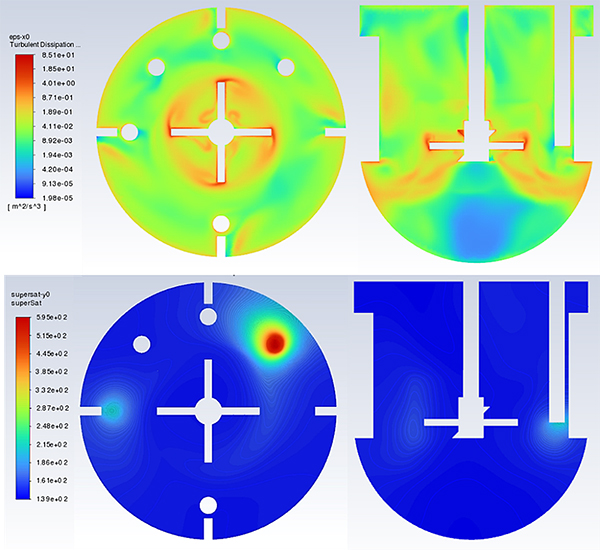Building on knowledge acquired relating to alumina precipitation synthesis for heterogeneous catalyst supports, IFPEN’s teams set about working on pCAMa synthesis for Li-ion batteries. These materials are indeed also obtained by precipitation in stirred tank reactors, which shares similarities with alumina synthesis (nucleation, growth and agglomeration phenomena). Nevertheless, they come with their own challenges and, consequently, with new research opportunities.
For example, this operation involves extremely rapid reactions and very low solubilities, resulting in very high levels and gradients of supersaturation (the driving force behind precipitation) in the reactor. In such conditions, the hydrodynamics and mixing at different scales (macro, meso and micro) become limiting factors in precipitate formation.
For the design and operation of such precipitation reactors, it is essential to understand the various physical phenomena taking place in this synthesis, as well as their interactions. This requires the development of a multiphysics model in which thermodynamics, kinetics, population balances, and hydrodynamics are strongly coupled. This will mobilize expertise in each of the four fields mentioned. The thermodynamic and kinetic models have yet to be optimized and the population balance model is not yet accounted for (simulation example shown in figure 1).
This research will be the focus of two PhD theses, starting at the end of 2024, aimed at characterizing and modeling different particle precursor formation phenomena.
The first thesis, supervised by the Physics and Analysis division, aims to capture short-time phenomena (nucleation followed by elementary crystal growth) by developing analytical methods for their detection and quantification.
The second thesis, hosted by the Process Modeling and Design division, will focus on understanding and modeling the impact of hydrodynamics on longer-time phenomena (growth, agglomeration, attrition, break-up).

a- Precursors of Cathode Active Materials
Scientific contacts: jan.verstraete@ifpen.fr - rim.brahem@ifpen.fr





